100 Languages of Learning and Creativity
What do paintings, squiggles, singing, dancing, and building have in common? They’re all languages of children, and they were all to be enjoyed by visitors to Cire Early Learning (CEL) Mount Evelyn’s very first Art Show.
Families came together to view countless works of art by none other than the children of the centre, proudly on display. Colourful, handmade bunting danced cheerfully in the mountain breeze outside, leading the way to the playful fairy lights and varied pieces showcasing the 100 Languages of Art. The show is inspired by the 100 Languages of Children – a guiding principle of the Reggio Emilia approach, upon which Cire’s Early Learning practices are structured.
Inside, artwork of all types sat organically arranged, complete with names and a peek into the creation process. Excited voices on soundboxes described their art, while eager children pulled loved ones to “Come see everything we made”.
The variety of materials and imagination was breathtaking. Children, with the freedom to explore texture, showed boundless creativity which enhances their learning; clay figures were made by children becoming proficient with different tools; Lego structures highlighted a growing understanding of structure and balance.



What Is Art?
Presented with the simple term ‘Art’, one might think primarily of painting and drawing. Of those there were plenty, an impressive array of scribbles and paintings showing their fine motor development, exploration of mathematics in symmetry and colour blending.
Box construction created with trial and error to learn about structure, weight, was proudly on display in the form of trucks, semi trailers, and a boat with a cleverly-placed door above the waterline. Children exposed the secret to some of their watercolour paints: the colours come from red or brown onion skins, turmeric, and more.
What’s an art show without music and dance? Children had listened to music and been presented with a giant canvas, paint, and their own bare feet. How does a child move when listening to country music? What does it look like when they hear Mozart? What if disco music was a different colour, and how would it mix with other genres in their dance through the paint? Viewers look through time at the movements of the children, some twirling, others tiptoeing through the gooey paint, others stomping to the beat. More singing in soundboxes reveal the children’s familiarity of patterns and repetition.


“Come See Our Animals”
Teamwork is visible in spades. A paper and fabric lake is home to crocodiles and octopus. Nearby, our smallest learners had made a special bush to be home for the endangered spotted quoll family.
This was the children’s way of conveying their understanding of the endangered species – their voices, captured by soundboxes, so earnest as they explain what ‘endangered’ means; their use of recycled materials in shaping the animals; their questions about sustainability and how it can help their world. Their love of the visiting kookaburra is clear in their joint efforts to craft something that not only looks like a kookaburra, but their understanding of its role – and theirs – withing their environment.
Their words “Come see our animals” invite us to visit their care in crafting their art in all its aspects.
Natural and recycled materials found there way into almost every piece, through complex sock puppets and paintings on all kinds of surfaces – even a corrugated blind! The children embraced it all.
“The child has
a hundred languages, a hundred hands, a hundred thoughts, a hundred ways of thinking, of playing, of speaking.”
Loris Malaguzzi
The Environment as Teacher
Genuine “Oooh” and “Ahhh” sounds came from appreciative relatives, their minds opened by their children’s awareness and interpretation of their surroundings. Guided by the environment as teacher (another principle of the Reggio Emelia approach), the children created impressions of the winter sunrise and the first blooms of the garden’s Happy Wanderer.
It’s easy to imagine the children having a great time exploring and being themselves in the bush. The learning of bush kinder was displayed in their diverse creations using cardboard and bush ingredients: the letter E made from leaves and flowers, even using the cardboard ‘canvas’ as a part of the art itself, in one case as a pizza base with gumnut topping. Delicious!



Curious, Creative, Collaborative
Did you know that Cire Early Learning Mount Evelyn has a jersey? Can you guess who designed it?
While learning about AFL jerseys, the children decided that Cire needed one. Working together and practising listening to each other, they decided to include the things they see and do every day: the Cire logo, gumnuts, the lemon tree, kookaburras…completed by their frequent-but-beloved heavy rain.
Perhaps the most precious of all were the Family Sticks, branches to decorate the Cire family tree. One of the few pieces not completed on the premises, the sticks were taken from Cire’s yard and decorated at home by the families – and what a collection they were. From one stick hung beads representing family members; another had photos cleverly stuck onto protrusions on the stick (its shape is unique, as all sticks are). Others were decorated with cake sprinkles, hair glitter, paint, and yarn, showcasing the interests and language of each family.
Art is, simply, being creative. Over 6 months of preparation and countless hours by staff, including Mel and Anna, culminating in an experience that leaves visitors awed by the imagination and intelligence of children. An explorative adventure that brings adults, perhaps, just a little closer to understanding another few languages that our little ones are excited to share.

Curious to know more about the services at Cire Early Learning?
Be sure to follow us for more exciting events!
Cire Early Learning – Instagram
Cire Early Learning – Facebook


